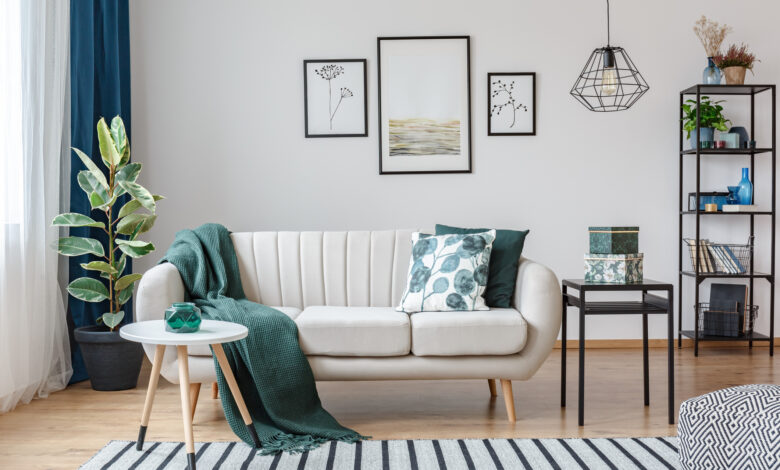Is Feminine Décor Performative or Empowering in the Home?

In a world where everything from colour palettes to cushion choices can ignite a debate, feminine décor sits at the crossroads of comfort and controversy. Often dismissed as “just pretty” with its soft forms and frilly finishes, you’ll find that feminine décor is a style that’s layered with meaning, agency, and even rebellion when you look a bit deeper.
So, the question stands: what does it mean to decorate in a feminine way? And does that reflect empowerment, or does it mimic outdated tropes?
What Is Feminine Décor?
While it tends to lean towards soft shapes, warm lighting, delicate textures, and gentle pinks and purples, feminine décor isn’t a one-size-fits-all aesthetic. Think velvet cushions, curved furniture, floral prints, and an embrace of delicate decorative detail. It’s the kind of space that invites you to get comfortable and stay.
Despite its name, feminine décor isn’t limited to any gender either. Anyone can create a soft and serene space. If anything, it’s more about energy than identity!
Performative or Personal?
Feminine décor comes with the stereotype that it’s inherently unserious, somewhat childish, and impractical. It can be easy to see why, when you consider how modern ideals have shaped interior design for years, with their sleek lines and minimalist palettes, rejecting anything overly sentimental or ornamental. Femininity, then, in this context, was regarded as frivolous.
But thanks to social media, aesthetics like cottagecore, dopamine décor, and cocoon-core have exploded in popularity, with a large number of women reclaiming softness as a symbol of strength. Suddenly, the home was more about feeling than appearance.
So, feminine décor is performative, but only in the best sense. It shows off emotional intelligence, gentleness, playfulness, and power in unexpected forms.
Reclaiming the Right to Be Soft
There’s a reason why cocoon-core bedrooms have become such a hit. These spaces offer refuge in a relentless world with their enveloping shapes, warm lighting, and layer upon layer of fabrics. They say softness is protection, disproving the idea that they’re weak, and that in itself is empowering.
Choosing floral wallpaper or rose-toned throws doesn’t mean you’re giving in to gender norms either. In fact, for many, it’s about reclaiming design choices that have historically been belittled, and reshaping them into acts of autonomy.
In today’s world, feminine interiors can be fiercely political. They challenge the notion that “good design” has to be minimal or masculine. They celebrate lived-in spaces, emotional comfort, and intuitive style.
And none of that’s performative, it’s just existing comfortably.
Why Is This Trending Again?
The resurgence of feminine interiors is part of a broader cultural trend. From cosy grandmillenial to delicate coquette, people are longing for spaces that are nurturing, sensory, and soulful. Lockdown intensified this desire, and it’s remained strong. Since those dark days, homes became more than just a place to sleep; they became sanctuaries, offices, classrooms, and safe zones. In that shift, the hard edges of popular modern design elements, such as clean lines and grey-on-grey, became exhausting.
So, soft colour palettes, tactile materials, and emotive details were the answer, making a strong comeback because they’re personal, not just pretty.
Feminine décor also rejects fast, copy-paste interiors. It’s deeply aligned with the “forever home” ethos and slow decorating movement. Allowing you to design a home that adapts, evolves, and supports real life over time.
How to Style Without Falling into the Trap
Mix Softness with Strength: Pair delicate pastels with grounded materials like wood or stone. Think about how cosy a blush velvet chair on a wood-effect vinyl floor would look.
Add Purposeful Details: Feminine doesn’t mean cluttered, so make sure to choose key pieces that feel intentional, but not overly sweet. Think of an arched mirror or a floral mural.
Incorporate Curves: Soft silhouettes are a great way to bring comfort and charm to a space. Whether it’s scalloped lampshades or curved sofas, just remember to keep things balanced.
Layer, Don’t Overload: Feminine design is about comfort, not chaos. You can layer textures to create interest without going full dollhouse. Consider how a fluffy lavender rug would look over medium-toned engineered wood.
Embrace Sentiment: Don’t shy away from showing your history through photos, heirlooms, or trinkets. Feminine spaces are nostalgic, after all!
Powerful or Empowering? The Verdict
Feminine décor has never been about sticking to one specific look; instead, it’s about how that look makes you feel. It can be an act of reclaiming space, of self-care, and of softness in a world that tends to prioritise performance and productivity over presence.
Decorating with femininity in mind isn’t a sign of fragility. It’s a statement that softness, emotion, and beauty deserve just as much space in the home as structure and sharp lines.
Author Bio:
Sophie Marlowe is a digital content writer and outreach executive for Luxury Flooring. She specialises in crafting engaging blogs on home improvement and home decor with a focus on flooring. Sophie writes handy how-tos, easy guides, and helpful comparisons, letting the reader be informed and inspired to take their home to the next level.


